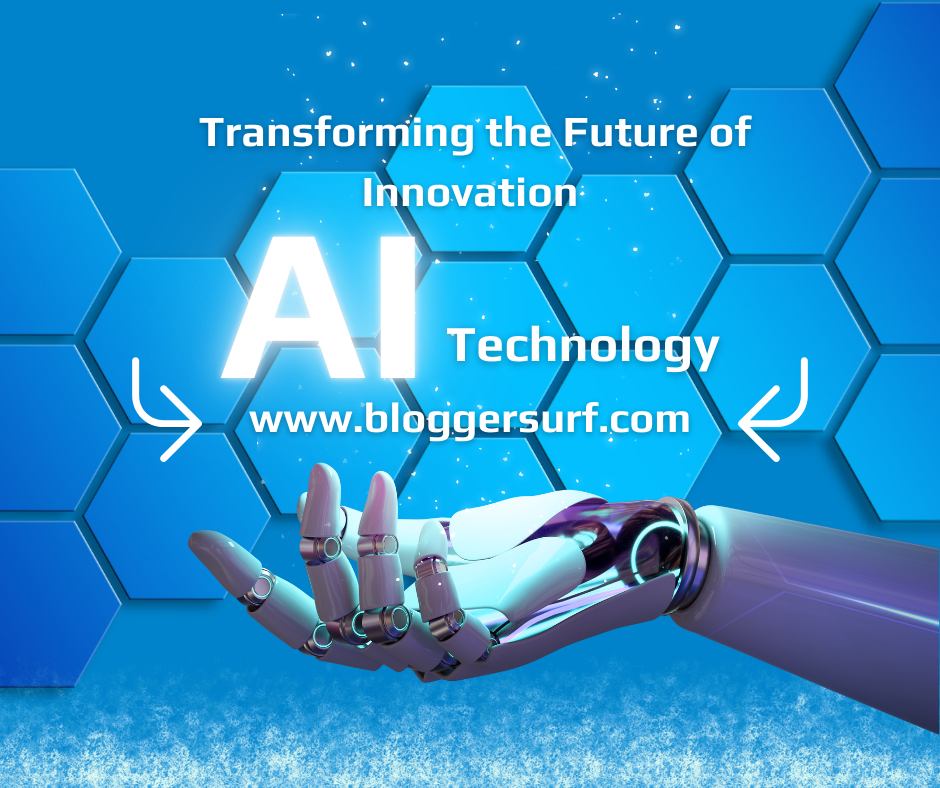AI Technologies: Transforming the Future of Innovation
Introduction
Artificial Intelligence (AI, AI Technologies) has transcended its roots in science fiction to become a transformative force driving change across industries. From voice assistants like Alexa and Siri to life-saving medical technologies and autonomous vehicles, AI is no longer a futuristic concept—it’s the present reality shaping the world we live in. But what exactly are AI technologies, and why are they so crucial to the future of innovation?
This blog explores the core aspects of AI technologies, their types, applications, and how they are poised to shape the future. Whether you’re a tech enthusiast or someone curious about how AI impacts daily life, this deep dive will leave you inspired and informed.
What Are AI Technologies?
Artificial Intelligence refers to the simulation of human intelligence by machines that are programmed to think, learn, and perform tasks autonomously. AI technologies rely on vast amounts of data, advanced algorithms, and computational power to carry out functions such as decision-making, problem-solving, language processing, and even creativity.
One of the most fascinating aspects of AI is its ability to learn and adapt. Unlike traditional computer programs, which follow predefined instructions, AI systems analyze data patterns, make predictions, and improve their performance over time. For example:
- When Google Maps suggests the quickest route based on live traffic data, it’s using AI.
- When Netflix recommends movies and shows tailored to your taste, that’s AI at work.
- And when self-driving cars navigate city streets safely, AI is behind the wheel.
But AI technologies are not monolithic. They span various fields and serve countless purposes, from automating mundane tasks to unlocking the potential for groundbreaking discoveries.

The Building Blocks of AI Technologies
AI is built on several foundational technologies, each contributing to its unique capabilities. Here’s a closer look at the key components that power modern AI:
- Machine Learning (ML):
- At the heart of AI is Machine Learning, which allows machines to learn from data without being explicitly programmed. It involves training models on data so they can make accurate predictions or decisions. For example, spam filters in email services use ML to identify unwanted messages based on patterns.
- Deep Learning:
- A subset of ML, deep learning mimics the structure of the human brain through artificial neural networks. It powers applications like image recognition, speech processing, and autonomous driving. Deep learning models like OpenAI’s GPT are changing how we interact with machines.
- Natural Language Processing (NLP):
- NLP enables machines to understand and respond to human language. This technology is the backbone of chatbots, virtual assistants, and tools like Google Translate. It’s also used to analyze sentiment in social media posts or customer reviews.
- Computer Vision:
- Computer vision focuses on enabling machines to interpret and process visual data, such as images and videos. It’s used in facial recognition, security systems, and even agriculture, where drones monitor crop health using AI-driven image analysis.
- Generative AI:
- Generative AI takes creativity to a whole new level. From creating realistic images with DALL-E to generating human-like text with ChatGPT, this technology allows AI to produce content that mimics human creativity.
- Robotics:
- Robotics combines AI with mechanical systems to build machines capable of performing complex tasks. From robotic arms in manufacturing to humanoid robots like Sophia, robotics is an exciting frontier of AI.
Applications of AI Technologies
AI technologies are not confined to laboratories—they’re actively shaping industries and improving lives. Here’s how AI is making an impact in various sectors:
- Healthcare:
- AI is revolutionizing medicine by enabling faster, more accurate diagnoses and personalized treatments. For instance, AI algorithms can detect diseases like cancer from medical scans earlier than human doctors. Virtual health assistants provide instant medical advice, while predictive analytics help hospitals manage resources effectively.
- Business and Finance:
- Companies use AI for customer service automation, fraud detection, and predictive analytics. Tools like chatbots and recommendation engines enhance customer experiences, while algorithms analyze market trends to guide investment decisions.
- Transportation:
- Autonomous vehicles are perhaps the most well-known application of AI in transportation. Companies like Tesla and Waymo are developing self-driving cars that rely on AI to interpret their environment and make real-time decisions. AI also improves traffic flow through smart traffic management systems.
- Education:
- AI-powered tools are transforming education by personalizing learning experiences. Adaptive learning platforms tailor content to individual students’ needs, while virtual tutors provide 24/7 assistance. AI also helps educators analyze student performance to improve teaching methods.
- Creative Industries:
- AI is not just automating repetitive tasks—it’s also a creative collaborator. Musicians, writers, and designers are using AI tools to compose music, write stories, and create artwork. For example, AI-generated paintings have sold for thousands of dollars, blurring the lines between human and machine creativity.
- Agriculture:
- Farmers are using AI-driven technologies to optimize crop yields, monitor soil health, and predict weather patterns. AI-powered drones and sensors provide real-time data that helps in precision farming.
The Future of AI Technologies
The rapid advancement of AI technologies suggests a future filled with possibilities. However, with great power comes great responsibility. Here are some key trends shaping the future of AI:
- Ethical AI Development:
- As AI becomes more powerful, concerns about bias, privacy, and transparency grow. Ethical AI development focuses on creating systems that are fair, accountable, and free from harmful biases.
- Explainable AI (XAI):
- Many AI systems are often described as “black boxes,” where their decision-making process is unclear. Explainable AI aims to make these systems more transparent, helping users understand how and why decisions are made.
- AI for Sustainability:
- AI is playing a critical role in addressing global challenges like climate change. From optimizing energy consumption to monitoring deforestation, AI-driven solutions are helping build a more sustainable future.
- General AI:
- Today’s AI systems are specialized, designed for specific tasks. The next frontier is general AI—machines that can perform any intellectual task a human can. While we’re still far from achieving this, progress in AI research is bringing us closer to this ambitious goal.
Conclusion
AI technologies are not just a passing trend—they are the driving force behind some of the most significant advancements in modern history. From healthcare to entertainment, transportation to education, AI is shaping a future where possibilities are limitless. But with this transformative power comes the responsibility to ensure that AI serves humanity’s best interests.
As we stand at the intersection of innovation and opportunity, it’s essential to understand, explore, and embrace the potential of AI technologies. Whether you’re an entrepreneur looking to leverage AI in your business, a student curious about its applications, or someone eager to learn more, the time to engage with AI is now.
What excites you most about AI technologies? Share your thoughts in the comments below, and let’s start a conversation about how AI is changing our world!

